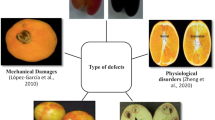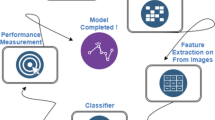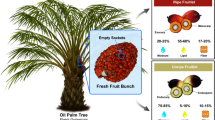Abstract
Moisture content is an important index in peanut (Arachis hypogaea) production and storage. To achieve the accurate and rapid nondestructive detection of peanut moisture content, we designed a detection device that utilizes a low-cost vector network analyzer (VNA). The aim of the study was to compare the performance of the low-cost VNA with that of a commercial VNA to determine its suitability as a more economical replacement. Peanut pod samples with different moisture contents were used as the research object. The low-cost VNA was used to measure the scattering parameters of peanut pods with different moisture contents using the microwave free space method. The measured scattering parameters were compared with the actual moisture content of peanut pods using the XGBoost algorithm, and a model of peanut pod moisture measurement using scattering parameters was obtained. To reduce the influence of redundant frequency on the model, the measured frequency was screened using the step, equal division, and competitive adaptive reweighted sampling (CARS) methods. The results showed that both the equal division and CARS method effectively screened the frequency. The equal division method produced the best model with a coefficient of variation (R2) value of 0.9990, mean square error (MSE) of 0.1064, root mean square error (RMSE) of 0.3262, and mean absolute error (MAE) of 0.1937. Furthermore, the device displayed a low percentage of error, indicating its suitability for nondestructive testing of peanut pod moisture content. When the actual moisture content was 35.57%, the maximum error of the predicted value was 1.52%, indicating that the device meets the requirements of nondestructive testing of peanut pod moisture content.













Similar content being viewed by others
Data availability
Data will be provided upon request.
References
C. Qu, Z. Wang, X. **, X. Wang, D. Wang, A moisture content prediction model for deep bed peanut drying using support vector regression. J. Food Process. Eng. 43, e13510 (2020). https://doi.org/10.1111/jfpe.13510
M. Vera Zambrano, B. Dutta, D.G. Mercer, H.L. MacLean, M.F. Touchie, Assessment of moisture content measurement methods of dried food products in small-scale operations in develo** countries: a review. Trends Food Sci. Technol. 88, 484–496 (2019). https://doi.org/10.1016/j.tifs.2019.04.006
S. Trabelsi, M.A. Lewis, S.O. Nelson, Microwave moisture meter for in-shell peanut kernels. Food Control 66, 283–290 (2016). https://doi.org/10.1016/j.foodcont.2016.02.016
J.D. González-Teruel, S.B. Jones, D.A. Robinson, J. Giménez-Gallego, R. Zornoza, R. Torres-Sánchez, Measurement of the broadband complex permittivity of soils in the frequency domain with a low-cost vector network analyzer and an open-ended coaxial probe. Comput. Electron. Agric. 195, 106847 (2022). https://doi.org/10.1016/j.compag.2022.106847
S.B. Jones, W. Sheng, D. Or, Dielectric measurement of agricultural grain moisture—theory and applications. Sensors (Basel) 22, 2083 (2022). https://doi.org/10.3390/s22062083
C.G. Rossa, P.M. Fernandes, A. Pinto, Measuring foliar moisture content with a moisture analyzer. Can. J. For. Res. 45, 776–781 (2015). https://doi.org/10.1139/cjfr-2014-0545
H. Tang, C. Xu, J. Zhao, Y. Wang, Screening and impurity removal device to improve the accuracy of moisture content detection device for rice. Int. J. Agric. Biol. Eng. 15, 113–123 (2022). https://doi.org/10.25165/ijabe.v15i6.7299
J. Zhang, C. Wu, W. Shao, F. Yao, J. Wang, Z. Wei, D. Du, Thickness-independent measurement of grain moisture content by attenuation and corrected phase shift of microwave signals at multiple optimized frequencies. IEEE Trans. Industr. Electron. 69, 11785–11795 (2022). https://doi.org/10.1109/TIE.2021.3116582
R.D. Martinez, R.C. Compton, A general approach for the S-parameter design of oscillators with 1 and 2-port active devices. IEEE Trans. Microw. Theory Tech. 40, 569–574 (1992). https://doi.org/10.1109/22.121735
R. Papazyan, P. Pettersson, H. Edin, R. Eriksson, U. Gafvert, Extraction of high frequency power cable characteristics from S-parameter measurements. IEEE Trans. Dielectr. Electr. Insul. 11, 461–470 (2004). https://doi.org/10.1109/TDEI.2004.1306724
S. Jiarasuwan, K. Chamnongthai, N. Kittiamornkul, A design method for a microwave-based moisture sensing system for granular materials in arbitrarily shaped containers. IEEE Sensors J. 21, 19436–19452 (2021). https://doi.org/10.1109/JSEN.2021.3087414
F. Ma, X. Zhang, Y. Yin, H. Yin, C. Song, L. Zhao, Low-cost lens antenna design for microwave moisture detection. Int. J. Antennas Propag. 2022, e3883786 (2022). https://doi.org/10.1155/2022/3883786
NanoVNA V2 (S-A-A-2). https://github.com/nanovna-v2/NanoVNA2 (2023)
NanoVNA, Very tiny handheld Vector Network Analyzer (2023). https://github.com/ttrftech/NanoVNA
NanoVNASaver, (2023) https://github.com/NanoVNA-Saver/nanovna-saver
S. Trabelsi, S.O. Nelson, MICROWAVE DIELECTRIC PROPERTIES OF SHELLED AND UNSHELLED PEANUTS. Trans. ASAE 47, 1215–1222 (2004). https://doi.org/10.13031/2013.16554
D. Duan, F. Ma, L. Zhao, Y. Yin, Y. Zheng, X. Xu, Y. Sun, Y. Xue, Variation law and prediction model to determine the moisture content in tea during hot air drying. J. Food Process. Eng. 45, e13966 (2022). https://doi.org/10.1111/jfpe.13966
T. Reveyrand, S. Hernández, S. Mons, E. Ngoya, SOLT and SOLR calibration methods using a single multiport “thru” standard connection, in 2020 95th ARFTG Microwave Measurement Conference (ARFTG), pp. 1–4 (2020). https://doi.org/10.1109/ARFTG47271.2020.9241365.
T. Chen, C. Guestrin, XGBoost: a scalable tree boosting system, in Proceedings of the 22nd ACM SIGKDD International Conference on Knowledge Discovery and Data Mining (ACM, San Francisco, 2016), pp. 785–794. https://doi.org/10.1145/2939672.2939785.
Z. Guo, M. Wang, A.A. Agyekum, J. Wu, Q. Chen, M. Zuo, H.R. El-Seedi, F. Tao, J. Shi, Q. Ouyang, X. Zou, Quantitative detection of apple watercore and soluble solids content by near infrared transmittance spectroscopy. J. Food Eng. 279, 109955 (2020). https://doi.org/10.1016/j.jfoodeng.2020.109955
F. Ma, D. Wang, Y. Yin, H. Yin, C. Song, X. Xu, Y. Sun, Y. Xue, L. Zhao, Determining peanut moisture content by scattering coefficient. J. Food Eng. 344, 111398 (2023). https://doi.org/10.1016/j.jfoodeng.2022.111398
J. Zhang, Y. Ma, G. Liu, N. Fan, Y. Li, Y. Sun, Rapid evaluation of texture parameters of Tan mutton using hyperspectral imaging with optimization algorithms. Food Control. 135, 108815 (2022). https://doi.org/10.1016/j.foodcont.2022.108815
A.W. Kraszewski, S. Trabelsi, S.O. Nelson, Broadband microwave wheat permittivity measurements in free space. J. Microw. Power Electromagn. Energy. 37, 41–54 (2002). https://doi.org/10.1080/08327823.2002.11688469
Acknowledgements
This study was supported by the National Natural Science Foundation of China [Grant Number 32071911], National Modern Agricultural Industry Technology System Post Scientist Project [grant number CARS-13, National Peanut Industry Technology System–Sowing and Field Management Mechanization Post], Shandong Modern Agricultural Industry System Wheat Industry Innovation Team [Grant Number SDIT-01-12], and Qingdao Agricultural University Doctoral Start-up Fund [Grant Number 663-1119049].
Author information
Authors and Affiliations
Corresponding author
Additional information
Publisher's Note
Springer Nature remains neutral with regard to jurisdictional claims in published maps and institutional affiliations.
Rights and permissions
Springer Nature or its licensor (e.g. a society or other partner) holds exclusive rights to this article under a publishing agreement with the author(s) or other rightsholder(s); author self-archiving of the accepted manuscript version of this article is solely governed by the terms of such publishing agreement and applicable law.
About this article
Cite this article
Ma, F., Zhang, X., Wang, D. et al. Nano vector network analyzer effectively measures peanut moisture content. Food Measure 17, 6026–6038 (2023). https://doi.org/10.1007/s11694-023-02093-2
Received:
Accepted:
Published:
Issue Date:
DOI: https://doi.org/10.1007/s11694-023-02093-2




